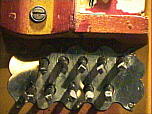
These are the sharp- edged string tuning screws of the instrument,
those look like made from cut- off and forged square iron hooks or the
like. Also the spiky metal plate behind them looks like cut out by
scissors. |
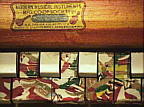
The keys are coated with a celluloid- like sort of colourful, hard
plastic sheeting that looks shrunk and warped. (Apparently it has been
either melted/ welded to the wood using coarse heat (fire?) or an overdose
of solvents.) |

The handle is a strip of sheet metal encased into a similar(?) plastic
material. The crude metal fittings at its ends are cut and bent by hand
and look like made from a piece of a can. Initially they were totally crushed
by the too tight screws and the lack of washers. |
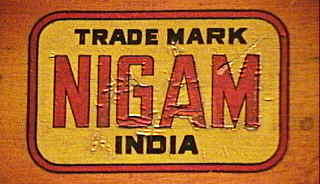



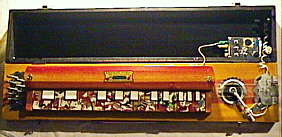


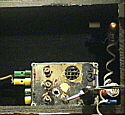
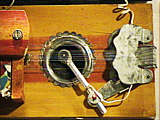 Here
you see the feedback tone arm; the hinge is stabilized by a spring loaded
clutch (despite it is quite wacky and bends easily).
Here
you see the feedback tone arm; the hinge is stabilized by a spring loaded
clutch (despite it is quite wacky and bends easily).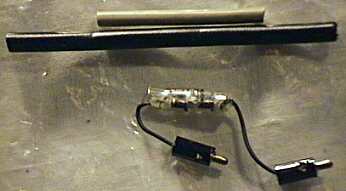 Here
you see some clangers (made from a piece of plastic cable insulation) and
an adapter with 2 diodes in each direction to influence feedback behaviour.
Here
you see some clangers (made from a piece of plastic cable insulation) and
an adapter with 2 diodes in each direction to influence feedback behaviour.